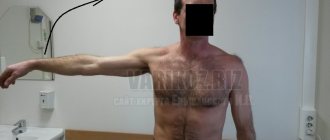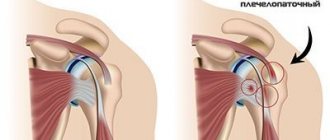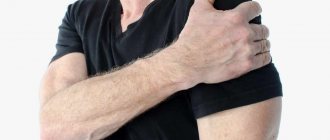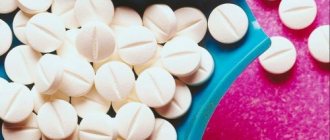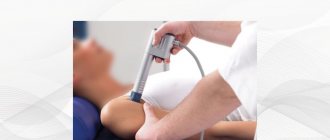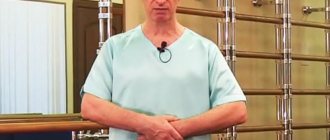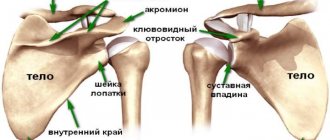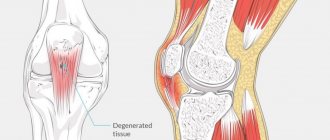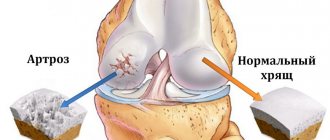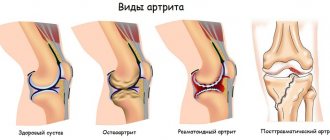Humeroscapular periarthritis (ICD 10 code - M75) is the most common cause of pain in the shoulder joint against the background of dystrophic lesions of the cervical spine. Pain syndrome is difficult to treat and leads to a decrease in quality of life and ability to work. In patients, the range of motion in the shoulder joint is limited, and the function of the upper limb is impaired. At the Yusupov Hospital, examinations are carried out using the latest diagnostic devices from leading European and world manufacturers.
Doctors take an individual approach to choosing a treatment method for each patient. For drug therapy, effective drugs are used that have minimal side effects. Rehabilitation specialists use innovative methods of rehabilitation therapy aimed at relieving pain and restoring movement in the shoulder joint. The medical staff is attentive to the wishes of patients.
Humeral periarthritis accounts for approximately 70% of lesions of the shoulder joint. This disease affects both young and old people. The peak of the disease occurs at 40-50 years of age. Which doctor treats glenohumeral periarthritis? At the Yusupov Hospital, an orthopedist, rheumatologist, and rehabilitologist treat patients suffering from joint disease. Severe cases of glenohumeral periarthritis are discussed at a meeting of the Expert Council with the participation of professors and associate professors, doctors of the highest category.
Causes of glenohumeral periarthritis (periarthrosis)
Periarthritis (periarthrosis) is the final stage of inflammatory and degenerative processes in the periarticular tissues of the shoulder.
Doctors include the most common causes of the disease:
- Microtraumas of muscles, ligaments and tendons as a result of overloads when performing monotonous, monotonous movements. Athletes and workers are susceptible.
- Shoulder injuries complicated by hematomas and severe swelling of soft tissues.
- Prolonged hypothermia, leading to vasoconstriction and, accordingly, a decrease in the nutrition of periarticular tissues.
- Sedentary lifestyle, forced positions, leading to nutritional deficiency of joint structures.
- Neuroreflex muscle spasms and spasms of small vessels in cardiovascular diseases (myocardial infarction, angina, hypertension, etc.), cervical osteochondrosis.
- Violation of the trophism of periarticular tissues in systemic diseases (diabetes mellitus, obesity, chronic infections).
- Anomalies in the development of the shoulder joint (dysplasia, arthropathy).
After radical operations for malignant tumors of the mammary glands, glenohumeral syndrome also often occurs.
Therapeutic tactics
A comprehensive approach to the treatment of periarthritis of the shoulder joint is practiced. The main goals of therapy are to eliminate pain, restore full range of motion, and prevent the spread of pathology to healthy areas of muscles, ligaments, tendons, and joint structures. Patients are advised to take a gentle regimen throughout therapy and use support bandages. In case of acute pathology, patients are recommended to wear orthoses, bandages with rigid inserts, and in some cases the shoulder is immobilized with a plaster splint. If periarthritis is caused by cervical osteochondrosis, then to prevent displacement of the vertebrae it is necessary to wear a Shants collar for several hours a day.
Clinical manifestations of shoulder arthropathy
A typical patient with glenohumeral periarthritis has degenerative-dystrophic lesions of the intervertebral discs of the lower cervical vertebrae with narrowing of the intervertebral canal. The clinical picture is determined by the form and stage of the disease.
The simple form of periarthritis is manifested by barely noticeable pain in the shoulder during normal movements (dressing, washing, combing). If the patient prefers to sleep on the affected shoulder, the pain is bothersome at night. Most patients do not indicate the cause and do not remember the onset of the disease; sometimes it is associated with hypothermia or injury.
Acute periarthritis is characterized by acute pain, which can radiate to the neck, outer surface of the shoulder and sharply intensifies with palpation, abduction and extension. Bending is less painful. The pain intensifies sharply at night and is often not relieved by painkillers.
General health suffers; low-grade body temperature, weakness, and malaise are typical. To avoid movements in the shoulder, patients bend the affected limb at the elbow joint and fix it with their healthy arm.
Reference!
As a rule, acute periarthritis is complicated by tendobursitis with the deposition of calcifications in the ligaments and tendons.
Chronic glenohumeral periarthritis occurs with moderate pain and increasing limitation of shoulder mobility, the range of movements decreases gradually. The pain is localized in the area of degenerative-dystrophic changes, sometimes radiates to the neck and is successfully relieved by taking analgesics.
Acute untreated bursitis often takes a chronic course. However, a primarily chronic form of the disease occurs against the background of fibrous bursitis. The final sad result of the chronic course in the absence of treatment is ankylosis (immobility) of the shoulder joint.
Humeral periarthrosis due to tendon rupture in athletes and heavy physical labor workers is manifested by severe pain, hematoma, and a sharp limitation of active movements. In this case, passive movements (with external help) are not limited.
Reference!
Dowborn's symptom - the appearance of pain when extending (raising the arm) by 45-60 degrees and disappearing with further elevation to 120 degrees is characteristic of damage to the tendons of the supraspinatus, infraspinatus and biceps muscles.
Applications
The application method is similar to compresses, but they are done dry. For rheumatic diseases and arthritis, using fresh burdock will help greatly. The leaves are washed, kneaded and heated in hot water. Afterwards it is applied to the area of the affected joint and wrapped in a scarf or wool scarf. The application can be done throughout the night.
Burdock is known for its ability to remove uric acid salts. Also, its main beneficial effect on joints is the reduction and suspension of inflammatory processes and pain.
Pathogenesis of periarthritis of the glenohumeral joint
Morphologically, PLP is degenerative-dystrophic changes in soft tissues. The pathological process begins in the muscle tendons, which are insufficiently supplied with blood due to anatomical features, excessive physical exertion and concomitant diseases. Ischemia (blood deficiency) leads to nutritional deficiency and micronecrosis, which trigger reactive inflammation with the proliferation of connective tissue and the deposition of calcifications.
Reference!
Degenerative-dystrophic changes are the replacement of healthy tissue with connective tissue scars and the deposition of calcium salts. The altered tendons are fragile and inelastic, so they are easily injured and inflamed.
As a rule, glenohumeral periarthritis begins with damage to the tendon (tendonitis) at the site of attachment to the bone. Then the inflammation affects the serous bursa (bursitis) and the periosteum (periostitis). The outcome of inflammation of the tendons and bursa can be fibrous adhesions of the walls of the bursa and vaginal tendons, which disrupts the biomechanics of the joint and limits the range of movements.
Diagnostics
As a rule, to make a diagnosis of glenohumeral periarthritis, an examination by a doctor and the patient performing certain functional tests are sometimes sufficient. Additional research methods such as ultrasound or MRI make it possible to visualize the altered connective tissue of the joint capsule and confirm the doctor’s preliminary diagnosis. In addition, laboratory tests are advisable to exclude possible other diseases. The most informative diagnostic method is MRI, which allows you to clearly visualize not only the joint capsule, but also morphological changes in all tissues of the joint.
Classification
Periarthrosis is a collective term that includes several pathologies that differ in location and nature of the lesion:
- Rotator cuff tendonitis is an inflammation of the rotator cuff muscles (supraspinatus, infraspinatus, teres minor, and subscapularis).
- Biceps tendinitis is an inflammation of the biceps tendon.
- The concept of calcific tendinitis is separately distinguished - an inflammatory process in the tendons of the shoulder muscles, occurring with a predominance of proliferation and the formation of multiple calcifications
- Partial or complete rupture of the tendons of the shoulder muscles.
- Retractile capsulitis is a degenerative-dystrophic lesion of the capsule of the shoulder joint.
- Impingement syndrome is a pathological process triggered by pinching of the biceps tendons and rotator cuff muscles between the head of the humerus and the end of the scapula.
Reference!
Doctors often call the collective pathology frozen shoulder syndrome, painful shoulder, cervicobrachial syndrome, and shoulder arthropathy.
Treatment
Treatment of glenohumeral periarthritis is complex and includes a protective regimen, drug therapy, physiotherapy, exercise therapy, and in some situations surgical intervention is indicated.
First of all, the doctor identifies the direct cause of a person’s pathological condition and eliminates it (he treats osteochondrosis of the cervical spine, metabolic diseases, infections, cardiovascular pathology; in case of professional pathologies, he recommends changing the mode of physical activity, training methods for athletes, etc.).
Drug treatment of periarthritis
In the acute period of PLP, therapy is aimed at eliminating pain, swelling and inflammation of soft tissues, and relieving spasms of muscle fibers. To do this, local anesthetics (Novocaine, Lidocaine) and corticosteroids (Diprospan, Hydrocortisone, Metipred) are injected into trigger points. Injection sites are selected depending on the localization of the pathological process; injections into the subacromial bursa and inside the joint are practiced.
For chronic pain, complex drug therapy is indicated, which includes:
Nonsteroidal anti-inflammatory drugs (NSAIDs) relieve pain, relieve swelling and eliminate inflammation (used locally and systemically). Both selective agents (Meloxicam, Celecoxib, Nimesil) and non-selective Diclofenac, Ortofen are used.
Muscle relaxants relieve muscle spasms (indicated for muscular-tonic syndrome).
Chonroprotectors and hyaluronic acid preparations inhibit further progression of degenerative processes in tissues.
The preparations "HIAL-IN", "HIAL-IN Prolong" are created on the basis of hyaluronic acid (a polysaccharide, which is a biological component of synovial fluid and the intercellular matrix of connective tissue). Hyaluronic acid stimulates metabolism in connective tissue cells, restores the biomechanics of the tendon-ligament apparatus, and increases the resistance of soft tissues to starvation.
Prescribed for the purpose of correcting tissue metabolism in ischemic and degenerative-dystrophic lesions of cartilage tissue and periarticular structures. The drugs reduce the need for NSAIDs and hormones.
Hyaluronic acid is injected into the tendon area, periarticular area, intra-articularly in the complex treatment of glenohumeral periarthritis. Injections of HA make it possible to stop pathological processes that destroy ligaments and joints, restore normal, physiological functioning of tissues, and protect against the adverse effects of using local hormonal drugs (Diprospan, Hydrocartisone, Metipred). The course of treatment is determined by the doctor, but most often consists of 3-5 injections of hyaluronate into the affected area with an interval of 5 to 10 days.
B vitamins improve the quality of nerve impulse transmission.
Surgical treatment of periarthritis
Surgical treatment is indicated for complete rupture of the rotator cuff tendons and adhesive capsulitis (if conservative treatment is ineffective). In the first case, the tendons are sutured, in the second, adhesions are eliminated and the fused areas of tissue are separated, which allows increasing joint mobility and improving tissue trophism.
The intervention is carried out using endoscopic equipment (arthroscope) using pinpoint incisions, which eliminates unpleasant cosmetic defects.
Physiotherapy
Physiotherapy increases the effectiveness of drug therapy. For glenohumeral periarthrosis, the following are indicated:
- phonophoresis reduces the density of connective tissue structures and improves the delivery of drugs into cells;
- shock wave therapy by exposure to short-pulse shock sound waves stimulates blood flow to soft tissues and crushes calcifications;
- electrophoresis with glucocorticoid drugs relieves symptoms of inflammation;
- Mud therapy and sulphide baths consolidate the results of treatment.
Physiotherapy is carried out in courses, the optimal regimen is every other day. It is not recommended to combine several types of physical therapy on one day, so the doctor draws up a schedule of procedures to get the maximum effect.
Exercise therapy
Physiotherapy exercises are prescribed after acute symptoms have subsided. A medical specialist develops an individual rehabilitation program taking into account age, weight, level of physical fitness and health status. The first exercises are recommended to be performed with minimal amplitude and intensity of movements.
Gradually increase the range of movements and the number of repetitions. It is strictly forbidden to perform exercises through pain. Experienced instructors monitor the patient’s condition and slowly increase the load.
Prevention of periarthritis
Prevention of PLP comes down to minimizing aggressive factors leading to the development of the disease:
- treatment of osteochondrosis of the cervical spine, as the most common cause of pathology;
- treatment of chronic infections, cardiovascular diseases, metabolic diseases, etc.;
- optimization of physical activity (correct training regimen for athletes, labor protection, gymnastics);
- healthy lifestyle, balanced diet.
Hyaluronic acid preparations “GIAL-IN” and “HIAL-IN Prolong” increase tissue resistance to starvation, prevent the development and progression of degenerative processes in periarticular structures, and improve the biomechanics of joints. Recommended for use by athletes and other people leading an active lifestyle associated with increased physical activity.
Recommended Foods
A healthy, balanced diet is the most important part of home treatment. The main rule is that the body must receive a sufficient amount of protein foods, vitamin products and minerals in order to saturate tissue cells with useful microelements.
Fruit jellies should be present in the patient’s diet
A necessary natural component for building joints is gelatin. Its effectiveness is undeniable for strengthening cartilage tissue. Therefore, it is useful to include gelatin-containing dishes (fruit jellies, jellies) in your diet. This component is also found in recipes for tinctures and compresses.
Complications
The most dangerous complication of glenohumeral periarthrosis is adhesive capsulitis, which within 3-4 months can lead to contracture (limited movement or complete immobility). Connective tissue (scar) actively growing in the joint capsule deforms the synovial membrane, involves muscles and ligaments in the scar, reducing the range of motion in the joint (“frozen shoulder symptom”).
The disease is insidious in that even with a full range of therapeutic and rehabilitation measures, movement in the shoulder may not be fully restored.
The most common complication of untreated tendinitis is rupture of degenerative tendons and ligaments, which can lead to permanent dysfunction and even dislocation of the shoulder.
Untreated tendinitis can be complicated by purulent inflammation of the joint capsule (bursitis ). Without surgical intervention (removal of exudate), the tendons and bursa become fused and deformed, which leads to limited range of motion.
The spread of the inflammatory process to a wide tendon strip covering the muscles of the shoulder (aponeurosis) ends with the formation of local or extensive foci of connective tissue replacement, which limits the range of motion in the joint.
Therapeutic baths
To improve the general condition of joints, ligaments and cartilage, you can perform procedures based on herbal baths. An example of a remedy for periarthritis is hay dust. It’s easy to prepare a bath solution:
- Bring 500 g of hay dust to a boil in 10 liters of water over medium heat.
- Immediately after boiling, the solution is removed from the heat and left for 40 minutes.
- Pour the filtered infusion into a heated bath (37–38 degrees) and take it for 20 minutes.
- Baths with hay dust are recommended to be carried out daily for 7 days.
